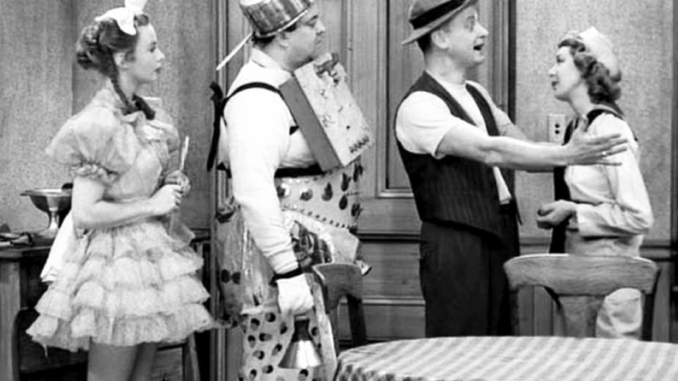
Few television shows have become as iconic—or as endlessly dissected—as The Honeymooners. While fans remember Ralph Kramden’s booming voice and Alice’s unflappable wit, stories from behind the curtain tell a more complicated tale. According to those who worked on the show, the tension that fueled Ralph and Alice’s fiery chemistry didn’t stop when the cameras stopped rolling.
Jackie Gleason’s Perfectionism on Set
Jackie Gleason, who not only starred as Ralph Kramden but also served as the show’s creative engine, was infamous for his perfectionism. Crew members often recalled that Gleason refused to rehearse extensively, preferring spontaneity during live tapings. He believed too much practice would kill the spark of real comedy. This approach gave the show its electric energy—but also left co-stars nervous.
Art Carney, who played Ed Norton, reportedly found the experience both exhilarating and exhausting. Some accounts describe Gleason snapping at Carney for delivering lines “too smoothly,” demanding instead that he “play it like it’s the first time.” The result? Carney developed a habit of improvising small gestures and quirks to match Gleason’s unpredictable timing—something fans now recognize as part of Norton’s charm.
Audrey Meadows and the Battle of Wits
Behind the scenes, Audrey Meadows (Alice) earned respect from Gleason not through submission, but by standing up to him. When the show was first casting Alice, Gleason rejected several actresses he felt were “too soft.” Meadows, determined to prove she was right for the part, submitted a photo of herself with no makeup, wearing a housecoat, looking every bit the weary Brooklyn wife. Gleason hired her immediately.
Their off-screen relationship reportedly mirrored their on-screen dynamic—respect mixed with occasional friction. Meadows was known for her quiet intelligence and was one of the few people Gleason allowed to challenge his comedic instincts. Some crew members even claimed that when Gleason stormed off set in frustration, Meadows was the only one who could talk him back into shooting.
The Pressure of Live Television
Unlike modern sitcoms, The Honeymooners was filmed live, meaning mistakes were often impossible to fix. There were no retakes, no safety nets, and the stakes were enormous. Any flubbed line or missed cue could go straight into the broadcast. The tension was so thick that stagehands reportedly avoided eye contact with Gleason during recording.
Stories circulated about nights when Gleason, stressed from production pressure, would disappear moments before filming—forcing producers to stall until he reappeared, cigarette in hand, calm and ready. For viewers, the performance looked effortless. But for the cast, it was a balancing act between brilliance and breakdown.
Chemistry Born from Conflict
What makes The Honeymooners endure is, paradoxically, that very tension. The explosive energy between Ralph and Alice wasn’t just acting—it was chemistry forged through stress, perfectionism, and mutual respect. Gleason’s volatile genius and Meadows’ grounded professionalism created a spark that no other sitcom of the time could match.
While later generations would romanticize the show as cozy nostalgia, the truth behind the camera was anything but calm. The Honeymooners was a battlefield of creative egos, technical constraints, and live television pressure—and somehow, that chaos produced one of the most beloved comedies in history.

